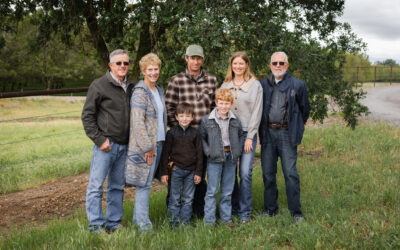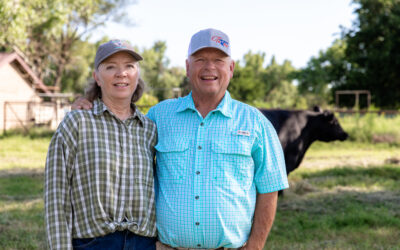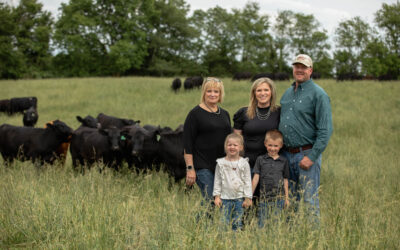
Flashback Friday: Keeping an eye on quality pays

I headed toward Martin Ranch, near Keystone, Neb., on a beautiful Thursday afternoon to learn what all had changed since they family won a Feedlot Cooperator of the Year award from CAB in 1998. (You can read about what they were up to in 1994 in this Angus Journal article: Proven Angus genetics important to Nebraska feeder.)
As I got to know the family, I felt that same feeling of being at home: the good people, good cattle, a strong sense of family and purpose and pride.
I get to document several stories a year where those are common themes. But I don’t always really get to take a look at how a family and ranch have grown in their pursuit of a dream.
TJ and Kristy Martin got married in 1984, and bought their first registered Angus cattle a year later to complement the farming and cattle feeding TJ had been involved in since high school.
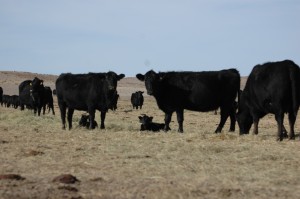
That philosophy applied to every enterprise on the diversified operation that they grew along with their family, which would include sons Tanner and Ty.
“Whenever we went anywhere we took the boys along,” TJ says, so the whole family atteneded the CAB Annual Conference back in ’98.
Like many ranching families, their kids also spent countless hours helping them feed, harvest and check cows.
“It’s been our lifelong goal to have our boys involved in the ranch,” Kristy says.
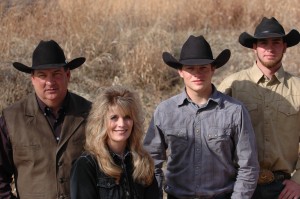
And so the story goes. Both young men went off to college and came home–Tanner as the main cattle feeder/crop farmer and Ty as the head “cowman.”
Growing from a small seedstock operation that sold bulls private treaty to where they are today–they credit that to knowing all facets of the business and creating bulls that work for everybody from rancher to feeder to consumer.
“That is one thing the commercial guy has to think about is his customer,” TJ says. “Whoever is buying his cattle, or if it’s retained ownership, if he can grid the cattle and get back a premium, that will help his bottom line. There is somebody out there who is going to feed your calves out and when he finds out that not only do they perform, but they grid good, too, that rancher will have repeat customers.”
May your bottom line be filled with black ink,
Miranda
You may also like
Legacy in the Golden Land
On a quiet stretch of Northern California rangeland, a different story unfolds. The Borror family’s legacy modestly speaks through the cattle they raise, the ground they steward. The generations who’ve made a life here demonstrate commitment to doing things right, even when no one is watching.
Helping Hands, Helping Herds
“When I die, I want to come back as one of your cows,” murmurs a friend to Steve Zybach. Full to the brim from an alfalfa ration every day, bountiful fields of lovegrass stretched out across the Texas Panhandle—and owners who leave no ounce of cattle care up for question. The Zybachs’ motivation for this level of dedication to their Angus cattle is simply love.
An Ambassador for All
Joanie, with daughter Lindsey and her husband, Adam Hall, raise registered Angus cattle with two primary goals: producing high-quality seedstock that perform well in a wide variety of environments and ensuring end-user satisfaction. Those goals tie everything together, from promoting Angus to other producers to sharing their story with CAB partners and beef consumers.

